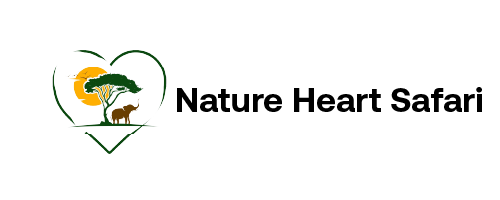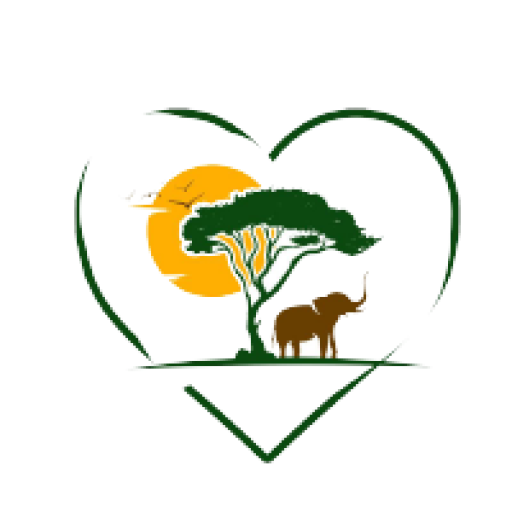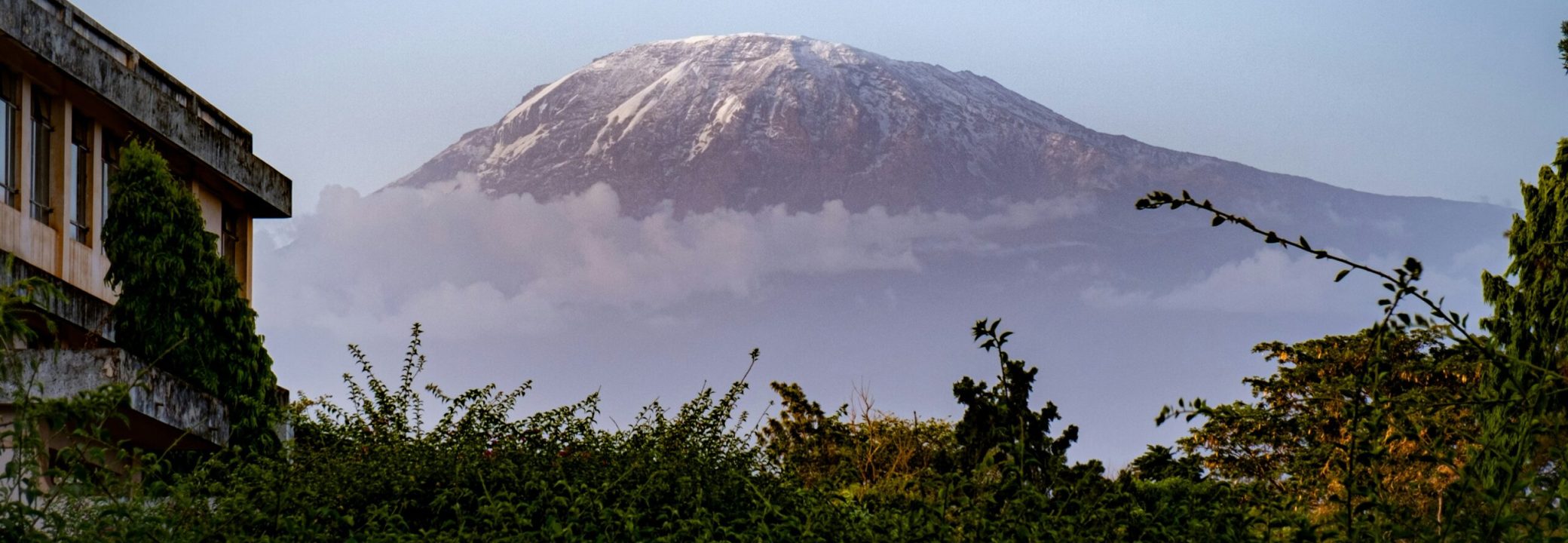
Kilimanjaro National Park
Rate : $165 to $4470
Best time : August to Octobe
High season : August to October
- Overview
- Getting to
- Biking in Kilimanjaro
- Costing of climbing
- Best time to climb
- Trail Conditions
- Health issues & Rescue
- Final Checklist
Kilimanjaro is a dormant volcano in northern Tanzania that covers a total area of 1,688 square kilometers (652 sq. mi, it stands at 5896m and is the highest peak in the whole African continent. It is also the highest free-standing mountain in the world and one of the world’s highest volcanoes. The mountain has three volcanic peaks which are Kibo, Shira, and Mawenzi. The park was established as a national park in 1977. Mt Kilimanjaro National Park is among Tanzania’s most visited parks, unlike the other northern parks, this isn’t a place for a wildlife view, although it’s there. Rather, people visit the area to trek the amazing snow-capped mountain on the equator, and to climb to the top of Africa.
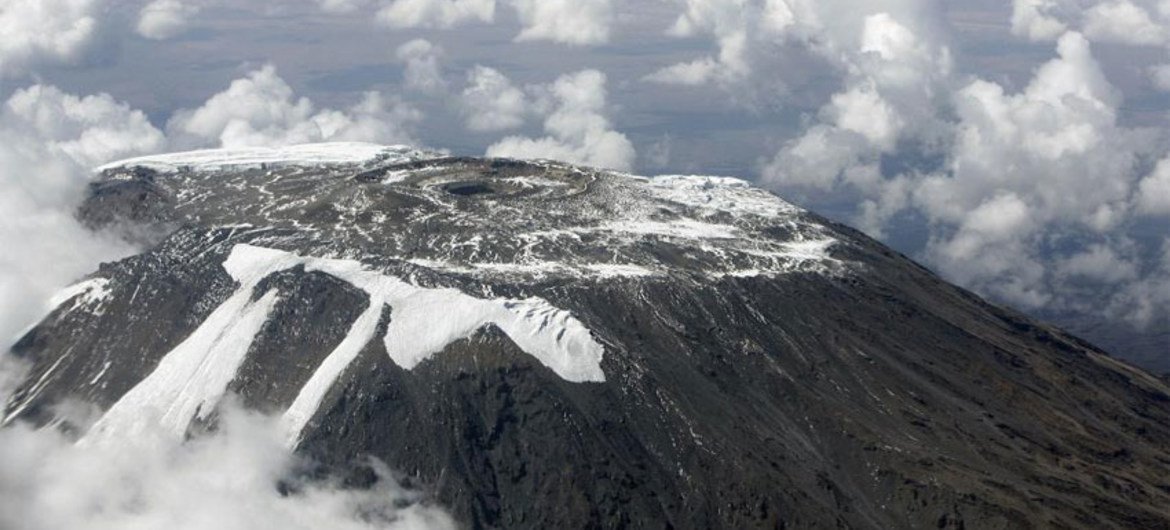
Kilimanjaro is a dormant volcano in northern Tanzania that covers a total area of 1,688 square kilometers (652 sq. mi, it stands at 5896m and is the highest peak in the whole African continent. It is also the highest free-standing mountain in the world and one of the world’s highest volcanoes. The mountain has three volcanic peaks which are Kibo, Shira, and Mawenzi.
The park was established as a national park in 1977. Mt Kilimanjaro National Park is among Tanzania’s most visited parks, unlike the other northern parks, this isn’t a place for a wildlife view, although it’s there. Rather, people visit the area to trek the amazing snow-capped mountain on the equator, and to climb to the top of Africa.
- Mount Kilimanjaro is more popular than the country it’s in (Tanzania)
Nearly every kind of ecological system is found on the mountain, cultivated land, rain forest, heath, moorland, alpine desert, and an arctic summit (Uhuru).
- Kilimanjaro is one of few places in Africa with permanent snow
The best airport to fly into is Kilimanjaro international airport, from there our team will pick you up, and transfer you to your hotel where you will be collected by the guide before your hike.
Alternatively, you can fly to Dar es salaam international airport, Zanzibar international airport, or Nairobi international airport from there you can take a local flight to Kilimanjaro airport or Arusha airport where our team can pick you up.
One of the great and tough challenges to conquering Mount Kilimanjaro.
This kind of adventure is suitable for an experienced biker with a very high level of fitness. the rocky slopes above 15000 ft and the height in general of 19000 ft will test the power of each cyclist and his/her bike. This can be done in an individual or group travel.
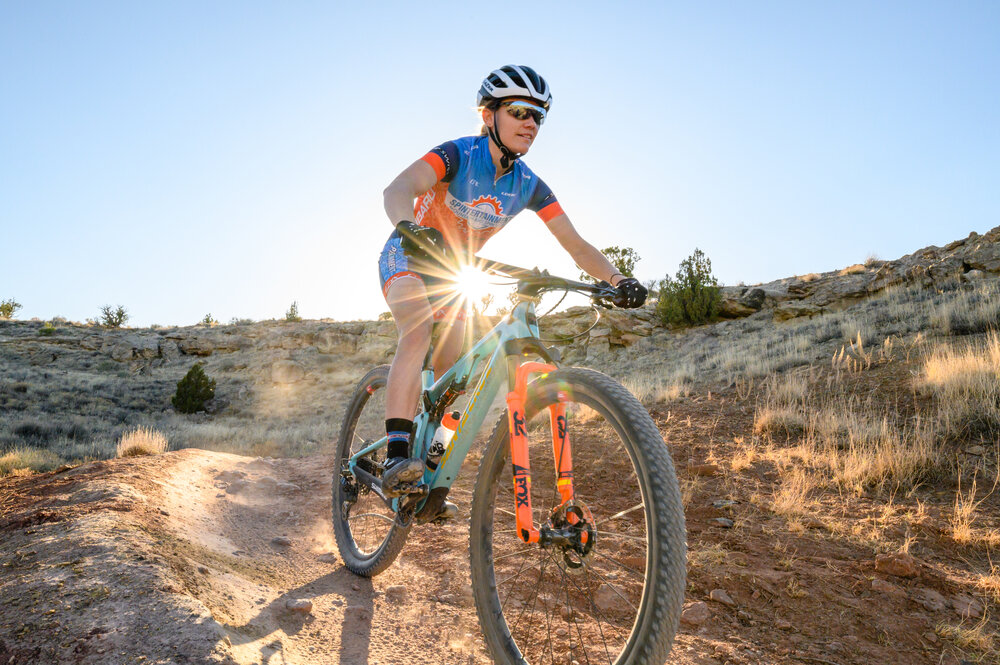
It is the best for people who are dreaming to conquer Mt Kilimanjaro in a unique way;
Yes! you will explore and reach Uhuru Peak 19340 ft on a two-wheel, tough challenge isn’t it? It is planned to ride from Kilema Gate to Kilema Camp with one night in a tent then to Horombo Hut and there joining the Marangu Route and then to Kibo hut. Reaching the top and riding past a few pieces of ice shelves to Uhuru Peak is tough due to the altitude but once you accomplish you will be proud of it. The 12000 ft descent over a day and a half is one of the longest in the world.
The Kilema Mountain bike trail runs parallel to the Marangu route. The Kilema route is mostly used as an access road by cars to bring supplies to the Horombo hut and to evacuate medical emergencies from Horombo hut. The route from Kilema gate to Horombo hut is a 4 x 4 gravel road, which is usually in fair condition.
Many adventure enthusiasts around the world dream of conquering Africa’s peak, Mount Kilimanjaro standing 5895m high, offers one of the best destinations to hike and a must-visit if you are set to conquer the 7 peaks of the world, The Kilimanjaro is a relatively expensive hike with prices ranging from 1200$ USD to over 5000$ USD making travelers around the world more cautious when choosing a deal, as most are focused on a great value & sustainable deal.
However, in case of the Kilimanjaro, a sustainable deal is not just the one agreed upon between the traveler & the agency, as some operators provide very low-priced deals but this can leave behind a community of porters exploited, bear in mind porters do the hardest part in making your journey possible & mostly left behind exploited (paid less than the minimum required by law & left to survive of tips at the pity of clients). So to your benefit, we will help travelers by providing (much-needed closure) a breakdown of the cost of the hike so travelers have some idea of where the money goes & sustainable deals
Note: those who will opt for agencies with the lowest deals available should make sure their tips should not only rectify the wage unjust caused but also reward the hardest working group on Kilimanjaro.
Cost breakdown of the Kilimanjaro hike (direct costs associated with the hike)
- Park fees-this are fees paid directly to the park authorities so the client & the crew can proceed to the park, these fees are non-negotiable also cannot be avoided however travelers below 16 years of age do enjoy a discount.
Park fees
- Rescue fees 20$ per person per trek
- Entrance fees 70$ per person per day
- Camping fees 50$ per person per night (hut fees for the Marangu route 60$ per person per night)
- Crew fees 2$ per crew per trek
Note: park fees + (its vat 18%) cannot under any circumstance be reduced, avoided, or evaded.
- Wages– wages will be paid to the crew (porters, guide, cook, assistant guide) however these costs are variable as the crew will increase relatively lower ass group size increases.
Minimum wages requirement for Kilimanjaro hike crew
- Porter 10 $ per day
- Guide 20 $ per day
- Assistant guide 15 $ per day
- Cook 15 $ per day
- Transport- transportation to & from the hiking trail & to your hotel in Arusha or Moshi, this cost is also variable (110 $ USD – 170 $ USD).
Food- the total bill for your meals & the crew’s meals, this cost is variable from 220 $ USD.
Vat (value added tax) – the added tax is a standard 18% on all products & services within the country.
Add on – Some equipment such as a private toilet. we don’t consider it a necessity & will provide them with extra payments. These additions can increase the cost of your hike e.g. it will need an extra porter to carry the private toilet & of course added cost of the equipment being used.
(indirect costs)
The company does incur administrative costs which can’t be directly traced to the cost
(extra costs you will or can incur).
Tipping – after seeing the minimum wage & the breakdown of what you pay for it is now clearer that tipping is a necessity for the crew, therefore, becomes obligatory for the client however it won’t be enforced but it is greatly recommended (see more on Kilimanjaro tipping guideline & why).
Note: tips will be provided directly to the crew by the client & are not included in the hike price.
Gear rental – you should expect to rent some gear if you are not fully equipped for the hike
When to climb Mount Kilimanjaro is an important decision one that not only affects having a successful hike but your overall experience. To your benefit, we have created a list of things you should consider when you have to make the decision on when you should hike Africa’s highest mountain.
Factors you should consider when choosing when to hike Mount Kilimanjaro
Weather is the ultimate factor, the Kilimanjaro being near the equator we face only dry or wet(rainy) seasons, with the dry season favored as it makes the hike less challenging therefore having more success chances. The rainy season is less favorable as you will slog through very deep mud in the first days, at a higher altitude you fight your way through ice, snow, and fog with moisture in your clothes, and gear you will not only be facing a challenge to the summit but risking your health through the process
Tip: bad weather on Kilimanjaro will ruin your overall experience, and your photos and will make the hike twice as hard
See the table below to know more about the month-by-month temperature, precipitation, cloudiness, and crowds.
Month | Temperature | Precipitation | Cloudiness | Crowds |
January | Warm | Medium | Low | High |
February | Warm | Medium | Low | High |
March | Moderate | High | Medium | Low |
April | Moderate | High | High | Low |
May | Moderate | High | High | Low |
June | Cold | Medium | Medium | Medium |
July | Cold | Medium | Low | High |
August | Cold | Low | Low | High |
September | Moderate | Low | Low | High |
October | Moderate | Low | Medium | Medium |
November | Moderate | High | Medium | Low |
December | Moderate | Medium | Medium | Medium |
Recommended |
Good |
OK |
Not Recommended |
Number of people on the mountain, many hike enthusiasts will be on the mountain in favorable weather so if you prefer a hike with fewer visitors you should opt for the low season and carefully choose a route
Budget, on the peak season there are many group hikes that will slightly reduce the cost of the trek.
The views, if you prefer to have a certain experience like summiting on a full moon, a snowy summit, stunning sunrise and sunset views dates are to be considered as it will influence these aspects
- Full moon dates, summiting on a full moon is possible within each month, but some months are less cloudy so you get an even better experience, peak dry season (August) is the best time for a clear full moon. we also have estimated full moon dates worth considering.
- A snowy summit, some months Kilimanjaro can have less snow & other months it can be very snowy. You can favor a snowy summit (peak wet season) or a summit without snow again this will be down to the dates & your decision on when you should hike Kilimanjaro.
- Sunset and sunrise views, during the dry season there it is less cloudy so you have an even better view of the sunrise and sunset.
*Trail conditions*
- The trails up the Kilimanjaro are well marked and maintained
- Technical skills are not required with only a few spots requiring the use of hands and feet
- The Barranco Wall, the Western Breach approach (now closed), and the optional Lava Tower climb are a few of the technical spots
- Long drop public toilets (pit latrines), wooden structures built around a hole. Make sure you have toiletries, private portable toilets with the privacy of a tent come with extra costs and are carried up the mountain
- No shower facilities on the mountain, wet wipes are essential (however you will also be provided with warm water
- Bad weather can complicate matters (loose, dusty, muddy, wet, or snowy trail) be prepared to trek all types of weather (fog, rain, snow)
- You will need to sign in once you arrive at each campsite at the big wooden building. In order to track the movements through the national park, all trekkers are required to sign their names in a book at each campsite upon arrival, one team member can sign in for the whole group, which can be helpful when there is a line for signing in. Passport numbers are not required.
Accommodation on the trail
- Unless you hike through the Marangu, accommodation on the mountain will be tents brought up by your porters
- Nighttime is going to be colder than you expect, bringing your own warm sleeping bag liner to complement the sleeping bag provided will go a long way towards helping you stay warm at night. It may also be a good idea to pack an aluminum bottle that can be filled with warm water before you sleep at night or even a hot water bottle. A warm balaclava that covers your face comfortably at night will also be a great help.
Meals and water on the Kilimanjaro
- Breakfast, lunch, and dinner will be provided by a chef who will cater to diet restrictions and meals to help your climb. Breakfast and dinner will be served in the “mess tent”
- Water is collected from mountain streams and purified with tablets, Water will get refilled after breakfast and dinner every night. Bring your empty water bottles and camelbacks to the mess tent for breakfast and dinner and an assistant guide will refill your bottles for you with clean water.
- Our advice: stop drinking once you arrive at camp for the night and only have a cup of tea with dinner (hopefully with a rehydration salt as well). Then, wait about 30 minutes to one hour after dinner to use the bathroom before bed and this will hopefully allow you to not need to get up in the middle of the night to use the bathroom (which will seem like one of the most tedious things you can imagine in the middle of a cold night at high altitude). Drink more when you first wake up and start moving instead (1 liter before breakfast if you can). This is easier to manage for using the bathroom at more convenient times.
Tip: carry at least 3 liters while hiking, water is only provided at the campsites
Day pack
You are only to carry a few items that you can need to the next camp, everything else will be placed into your duffel bag and carried by the porters (maximum of 15kg). items you will need to carry in your day pack are waterproof gear, extra clothing, water, snacks, gloves, hat, Sunglasses, bug repellant, and sunscreen. Wipes etc.
These are major health issues you may encounter while taking on the challenge to hike Mount Kilimanjaro
Acute Mountain Sickness (AMS)
Acute Mountain Sickness is also referred to as “Altitude Sickness” as the name indicates the illness is commonly encountered at exceptionally high altitudes, such as the summit area of Mount Kilimanjaro. This is a very common issue about 3 out of 4 hikers will suffer to some extent from altitude sickness, it is, therefore, important to familiarize yourself with this condition and preventive measures
The cause of altitude sickness “AMS”, as altitude increases the number of oxygen molecules per breath is reduced. At about 12000 feet (3600m) there are about 40% fewer oxygen molecules per breath so the failure of the body to adapt quickly to the reduced oxygen causes altitude sickness
The symptoms of altitude sickness “AMS” include the order normally experienced; headaches, nausea, anorexia, exhaustion, lassitude, rapid pulse, insomnia, swelling of the hands and feet, and reduced urine output.
What to do if you get altitude sickness “AMS”, the most effective treatment will be by immediately taking the affected person to a lower altitude. Often a drop as little as 500m will be sufficient.
Preventive measures to avoid altitude sickness “AMS”, Climbers can take precautions to at least minimize the severity of the illness
- Maintaining a slow steady pace from day one gives enough time for your body to adapt to the altitude. “pole pole” is a common Swahili phrase translating to slowly, which is now a norm among hikers climbing Mount Kilimanjaro.
- Including an extra day of acclimatization at a high altitude.
- Drinking at least 3-4 liters of water every day.
- Preventative medicine is also available and you should consult your physician for specialist advice.
Altitude sickness can be serious
Most hikers get minor effects of altitude sickness that they can hike through but to some, it can get the severe inability to walk, shortness of breath at rest, and fluid buildup in the lungs.
The fluid build-up may cause a condition known as edema, which can affect your lungs (High Altitude Pulmonary Edema) preventing effective oxygen exchange, or affect the brain (High Altitude Cerebral Edema) which will result in the swelling of the brain tissue. The latter can be lethal if not treated immediately.
Tip: it is essential you communicate any symptoms immediately to others, if symptoms persist or increase (severe headache, decreased coordination “ataxia”, weakness, fatigue, nausea, shortness of breath) means you will be suffering moderate AMS and you will be required to descend as at this stage only a descend or advanced medication can reverse the problem. It is important to descend before the ataxia reaches a point you can walk on your own.
Hypothermia
Hypothermia is the lowering of the body’s core temperature.
- Cause, if your clothes get wet or perspiration meaning the cold will now be under your clothing layers and will lead to a falling off your body temperature
- Prevention, correct equipment, and clothing are critical, proper layers of clothing (moisture-wicking fabric) will prevent hypothermia.
- Treatment is by getting to a shelter, removing all wet clothing, and getting the victim warm (placing him/her inside two or three sleeping bags preferably with another person)
Sun related injuries
About 55% of the earth’s protective atmosphere is below an altitude of 5000m. Far less ultraviolet light is being filtered out, making the sun’s rays much more powerful, which could result in severe sunburning of the skin.
Preventives
- It is strongly recommended to use a 20+ sun protection cream at lower altitudes,
- Total block cream above an altitude of 3000m.
- It is also important to wear dark sunglasses preferably with side panels above 4000m in the daytime and essential when walking through snow or ice. Snow blindness can be very painful, and will require your eyes to be bandaged for at least 24 hours.
Fitness
Any climber who suffers from any cardiac or pulmonary problems should be cautious and should not attempt to climb the mountain unless they have consulted their physician. It is strongly recommended that a physical fitness program is followed to prepare yourself physically for the mountain.
Foot problems
Causes
- Poor-fitting, new or little-used boots will result in blistering feet. Even if boots are only slightly too small, your toes will get bruised, particularly on your descent.
Prevention
- It is it therefore also important to keep your toenails short for the climb.
- Developing blisters should be treated immediately as soon as the “hot spot” is felt. Remove the boot and cover the area with zinc oxide tape or something similar.
Kilimanjaro rescue
There is an emergency medical helicopter evacuation service on the mountain, this service is only provided by Kilimanjaro SAR. It is recommended to have insurance covering this service
The type of insurance you will need
For a successful helicopter evacuation on Mount Kilimanjaro and Mount Meru, one should acquire travel insurance that covers medical evacuation 6000 meters above sea level, it is very important to ask your travel insurance provider to include this type of coverage within the policy that you purchase. Ensure your policy is not on a reimbursement basis.
What if you won’t have an insurance
If the patient evacuated is not medically covered by his/her travel insurance, the charges are between $5,200 and $5,800. These charges include helicopter evacuation and clinic.
Being properly equipped is one of the most important prerequisites of a successful summit attempt, to your aid we have prepared a checklist you can use as a guideline to be equipped for the trek
please remember to limit the weight of your duffel bag and its content to 15 kg (32 lbs.) as it’s the maximum a porter is required to carry, your sleeping bag will count towards the 15 kg, however sleeping mats, and tents will not count.
Note: for those who want to travel light equipment can be available for rental service or you can purchase them at stores once in Tanzania
Make sure you have everything you need to help you successfully summit Kilimanjaro.
Travel Documents
- A valid passport and visa
- Airline ticket
- International health card with immunizations
- Travel insurance
- Medical insurance
- US$ cash / Travelers Checks / Credit Card
Essential Items
- Duffel bag – large enough for all climbing gear and clothing. To be carried by the porters. An extra bag to be left at the hotel with extra gear
- Small luggage lock – to lock zippers
- Day backpack –20 – 35 L capacity. Large enough to carry your water, camera, raincoat, lunch pack, snacks & warm clothing
- Sleeping bag
- Ski-pole / walking stick
- Water bottles/containers
- Water Bladder (Camelbak type, 3 liters)
- Kilimanjaro map (Can be bought at Park gate)
Tip: duffel bag is preferred as porters bundle the bag with other items and carry the load on their heads
High Altitude Gear
- Waterproof, breathable & windproof jacket (outerwear like Ventex or Gore-Tex)
- Waterproof, breathable & windproof pants (outerwear)
- Polar fleece (middle layer)
- Thermal underwear (under layers)
- Mittens or warm gloves
- Glove liners (if necessary)
- One pair of thermal socks
- Balaclava
- Gaiters
- Thermal water flask
Hiking Gear
- Shorts
- Hiking pants
- Regular underwear
- T-shirts
- Raincoat or Poncho
Tip: for the base layer clothing with moisture-wicking fabric (merino wool or Capilene) is recommended, staying dry is essential. Avoid cotton as they absorb moisture.
Footwear
- Water-resistant semi-stiff hiking boots – mid-weight boots work great
- Shoes for overnight camps – i.e. sneakers, running shoes, etc.
- Socks – several pairs for the climb
- Liner socks – to keep your feet dry and limit the risk of blisters
- Equipment
- Sun hat or similar (with a brim)
- Knit hat (for warmth)
- Collapsible ski sticks (optional but highly recommended)
- Water bottles – two or three (total capacity at least 4 liters)
- Headlamp, a good strong one with spare batteries and an extra light bulb
- Water purification tablets
- Sunglasses, good quality dark lenses for the climb, with a securing strap
- Flashlight (torch) with spare batteries
- Backpack cover (optional)
- Camp pillow
Personal Items
- Toilet kit (soap, toothbrush, toilet articles, wet wipes, etc.)
- Towel, lightweight, quick-dry (optional)
- Sunscreen and lip protection, SPF 30+
- Ziploc bags, to protect the camera, binoculars, etc. from dust
- Toilet paper
- Wet wipes (recommended)
- Pee Bottle, to avoid leaving the tent at night (recommended)
- Money belt for passport and valuables
Medical and First Aid Supplies
- Headache tablets
- Altitude Sickness-Diamox (if not allergic to sulpha)
- Diarrhea – Imodium
- Nausea – Valid
- Malaria – Prophylaxis
- Water purification tablets
- Painkillers
- Muscular sprains
- Abrasions blisters and cuts – Plaster, bandages
- Antiseptic cream – Betadine
- Flu and colds
- Eye drops
- Insect repellent containing Deet
Optional Items
- Camera, extra lenses, memory cards, and spare batteries
- Binoculars
- Powdered sports drinks for the climb (ex. Game or Isotonic drinks)
- Pocket knife
- Notebook & pencil
- Plastic bags to keep clothing dry (masking tape)
- Energy snacks and sweets
- Video camera, tapes/memory cards, battery packs, and tripod
Tip: Checked luggage on airplanes can get lost or delayed on the way to Tanzania. You should prepare for this possibility by wearing or carrying on the items that are essential to your Kilimanjaro climb. While most clothing, gear, and equipment can be replaced in Tanzania prior to your climb, there are some things that you should not replace.
It is recommended that you wear one complete hiking outfit on the plane, including a long sleeve shirt, hiking pants, underwear, socks, and hiking boots. In your carry-on baggage, you should bring your backpack, waterproof jacket and pants, insulated jacket, fleece pants, snacks, toiletries, medications, camera, and all paperwork. Airline regulations do not allow you to carry trekking poles on the plane. Make sure you do wear/carry your hiking boots; wearing a different pair of boots on your climb will likely cause blistering.
Suggested Kilimanjaro National Park Tours
Contact Us
- info@natureheartsafaris.com
- +255 692 691 900
- Arusha,Tanzania
Our Company
Recent Tours
Copyright © 2025, by Nature Heart Safari. All Rights Reserved
Copyright © 2025, by Nature Heart Safari. All Rights Reserved
Our Company
Contact Us
- info@natureheartsafaris.com
- +255 692 691 900
- Arusha, Tanzania
